Energy-efficient renters
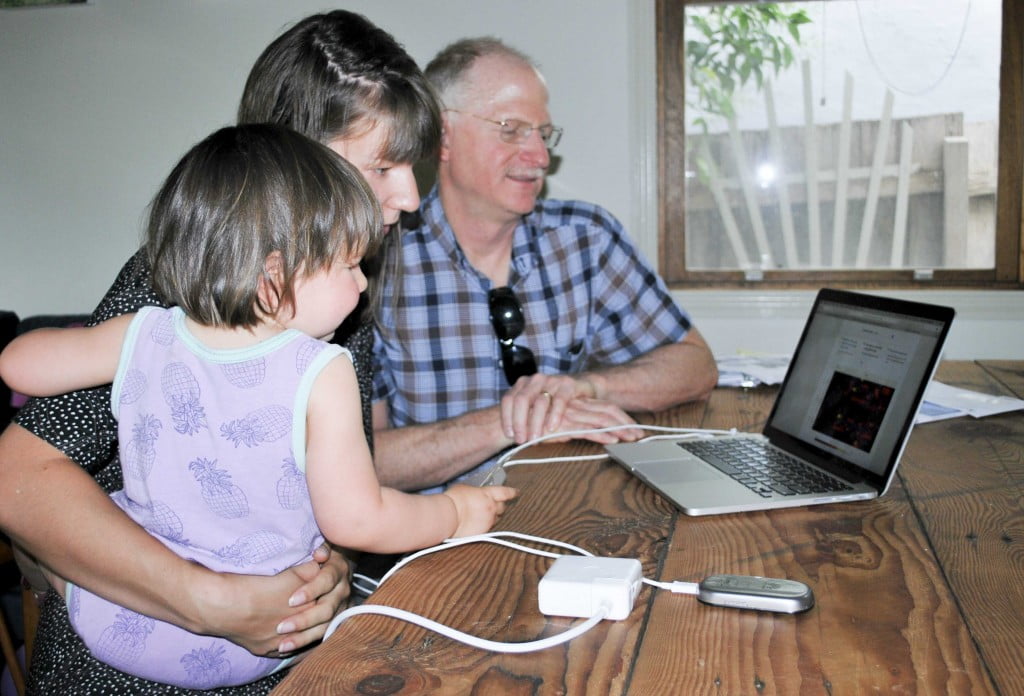
Sarah Coles attends a Melbourne house energy audit—and learns the steps renters can take to use less energy and reduce household bills.
This article was first published in Issue 134 (January–March 2016) of Renew magazine.
Nearly one in three Australians are renting. When you’re renting, installing solar PV, a 3000L water tank and double glazing doesn’t make financial sense; you’re not allowed to rip up the lawn to put in vegie beds, you can’t build a pergola to plant grapes on the north, and you’re unlikely to invest in a split system air conditioner. However, there are steps you can take to live more sustainably and comfortably.
Tim Forcey has around 10 years experience as a home energy consultant. He volunteers with the Bayside Council alongside ReNew luminary Alan Pears and has done some wonderful work with the Moreland Energy Foundation. We join him at a Thornbury rental, in Melbourne’s north.
When we get there, Tim is looking at a graph of the electricity usage for the past winter. It peaked at 40kWh per day. The average daily electricity use for a Melbourne family is 14kWh. Either side of winter the household electricity usage is low—the main appliances they use are the fridge and washing machine. Tim looks at the heat map provided by the electricity supplier, in this case Powershop. It shows that, perhaps unusually, the majority of the winter electricity usage occurred during the middle of the night.
Though they hadn’t previously seen the data visualised or had their usage explained in this way, Carmen and her partner Terry weren’t surprised; they have a two-year-old daughter, Maeve, and they leave a heater on in her room overnight when it’s cold.
The average efficiency rating of a Melbourne house is only 2 Stars, a “pretty poor” standard, according to Tim: “energy used to be cheap, so nobody cared that much.”
Renew editor, Robyn Deed, and Tim move around the house playing energy detective using a FLIR thermal imaging camera. The camera takes an image with each pixel coloured to show temperature differences. It’s just under 30°C outside and pointing the camera at the ceiling shows warmer areas where insulation may be missing.

Ten steps renters can take
1. Insulation
Pointing the thermal camera at the ceiling shows it’s uninsulated in the older part of the house. Tim sticks his head through the ceiling access hole and discovers a false ceiling and a mess of moved insulation.
Pointing the thermal camera at the halogen downlights in the living room, it’s obvious that insulation has been cleared around the lights, to avoid the fire risk of hot lights and insulation. To ensure effective insulation, you can fit downlight covers (approved for your type of downlights), then pack the insulation close. And replace those lights!—see step 3.
The foil lining beneath the roof cladding suggests the roof has been replaced, says Tim. The foil helps to reduce heat flow into the roof cavity and keep the house cooler in summer. Carmen and Terry do find the house comfortable in summer without an air conditioner, though she admits they have a high tolerance for heat.
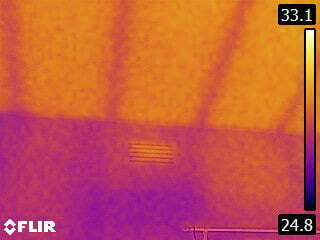

2. Draughtproofing
“Draughtproofing is not too costly,” Tim says,“and a little bit will make the house a lot more comfortable.” He points to a big gap in the frame and at the bottom of the back door: “A bit of tape is a cheap and nasty way to seal that, but if it was my place I’d use a piece of wood.” Tim suggests weatherstripping doors and windows with adhesive rubber or felt, “sandpaper the area first to ensure that it sticks well,” he advises. “A windy day is a good opportunity to feel around and see where the draughts are coming in.” He also suggests a fan above the bath could be sealed with a DraftStoppa, which prevents air leakage when the fan is not in use.
A lot of heat loss or gain occurs around the windows of a house. Thick, long curtains are great in the winter months, “It’s like a doona for your windows —the thicker, the better,” says Tim. Such curtains can be almost as efficient as double glazing in mitigating heat loss, he says. Carmen’s house is fitted with internal blinds which reflect the sun in summer, but Tim points out, “It’s best to keep the sun outside rather than block it when it has come through the window.”
You can save more energy by adding DIY pelmets to stop the circulation of air against the glass, which causes a lot of heat transfer. Pelmets are a narrow border of cloth or wood, close-fitted across the top of a window frame in combination with blinds or curtains. “Take them down and fill in the holes when you move out, if you think the landlord won’t like them,” says Tim. There are gaps in the floorboards. You can plug these gaps with any of a range of caulks and sealants. Large gaps run the lengths of all four sides of Maeve’s bedroom where there used to be carpet and a skirting board. Tim suggests filling with a rod made from HDPE foam and then finishing with sealant. “Ideally, you’re looking for a room which will have no unwanted airflow through the walls, doors or windows.”
And what about those vents in the top corner of the walls? A lot of old houses have vents from back when gas lights were common. You can buy seals for these. “If you feel like you need fresh air, open a window,” says Tim. You can stop draughts in the chimney by installing a balloon, but make sure you install it properly.
Note: Don’t do draughtproofing if you have an unflued gas heater; for other gas appliances see the warnings over the page.
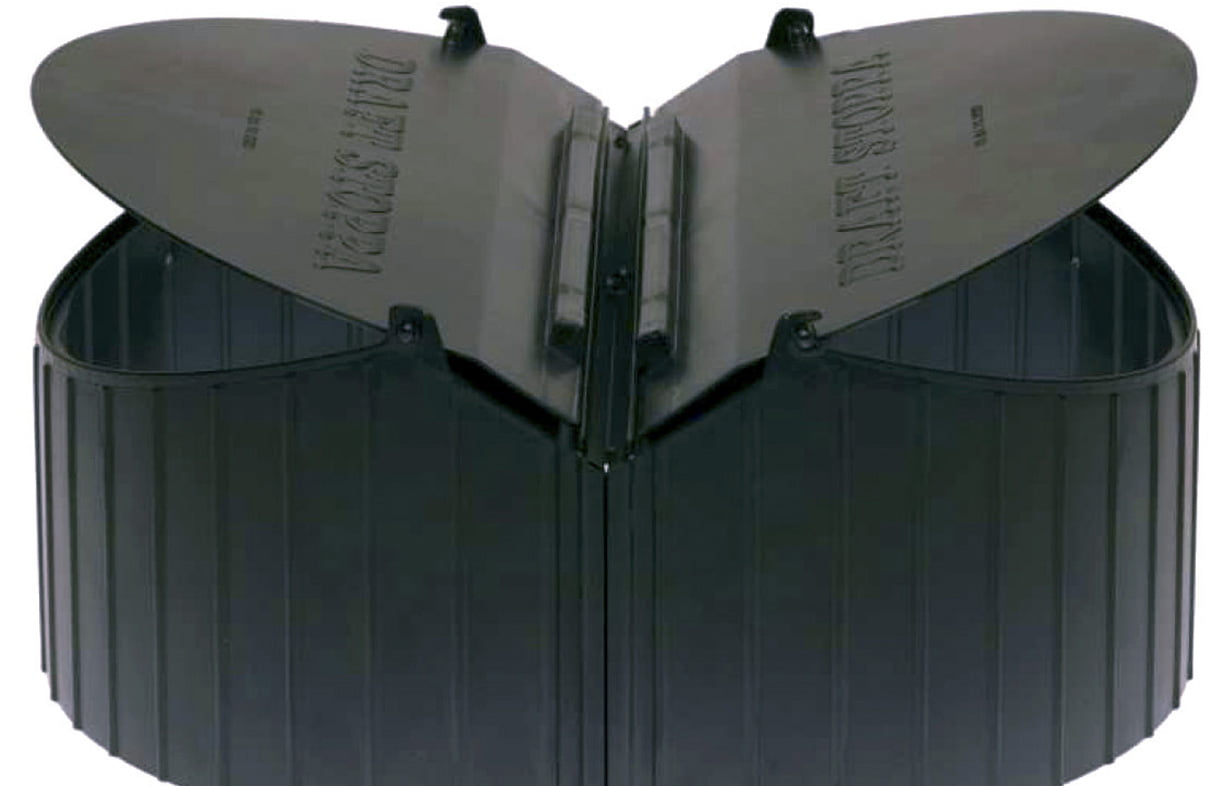
3. Lighting
There are six halogen downlights in the living room. In South Australia, the Retailer Energy Efficiency Scheme (REES), and in Victoria, the Victorian Energy Efficiency Target (VEET) scheme, replace household downlights with LEDs for free. “It’s pointless to use 10 times as much electricity as you need to,” says Tim. LED lights also last longer than conventional bulbs. The middle light in the bathroom is incandescent. This can also be replaced with an LED and use a tenth of the electricity.
The light is surrounded by a heat lamp with four globes, which they don’t use, Carmen says. Heat lamps use a lot more energy than a standard light (e.g. 1100 watts for the unit in total, which can add up if used for long periods), but so long as they aren’t on for long their overall energy use isn’t high and they can be a convenient way to heat a bathroom.
4. Heating and cooling
The Thornbury house has a gas heater in the living room. If you have a gas heater, get it inspected every couple of years for safety reasons (and make sure it is flued to the outside before doing any draughtproofing), and also to check it is working well from an efficiency point of view. A Sustainability Victoria 2014 report says, “The average Victorian home could save around $400 a year by using energy-efficient appliances over standard models.”
Tim suggests trying to negotiate with your landlord for a 4 or 5 Star (or higher) reverse- cycle air conditioner for heating; they can be completely renewable if you use GreenPower or your own solar, can be cheaper to run than a gas heater, and up to five times more efficient than an electric panel heater.
Carmen and Terry bought electric panel heaters for the bedrooms. “We didn’t use much heating before we had Maeve,” Carmen says, “but it’s freezing at night in the (uninsulated) front part of the house.” In the winter the heater in Maeve’s bedroom is on all night (on about 12°C) and they occasionally use a small heater in their room “so that it isn’t too torturous to get up and check on Maeve”. Turning the thermostat down even “a degree or two will always save money,” says Tim.
There is a small fan for the summer stored in the back shed but Carmen says, “This house is really good when you open the front and back doors—you can cool it down really quickly.”
5. Other appliances
Tim suggests keeping clutter away from the fridge to maximise its efficiency. Don’t do what everyone does and store a broom down the side, for example. Old fridges can be really inefficient, so it pays to check out how much energy yours is using. Carmen and Terry’s seems pretty good given their low energy use outside of winter, says Tim. If you want to check appliance energy consumption, use a power meter (such as a Power-Mate) or an in- home display connected to your smart meter.
The house came with a dryer, but the owners make use of the clothesline instead. “Dryers use a lot of energy,” says Tim.
Other appliances to consider include TVs, computers, washing machines, dishwashers and ovens. A heat map like that from Powershop can help track appliance energy use, though it’s a day behind so you’ve got to remember what you were doing at particular times of day. See ‘It’s in the stars’, for more information on choosing energy- efficient appliances and energy monitoring.
6. Hot water
The pipe that comes out of the hot water system and goes into the house is uninsulated at this house. You can purchase insulation at the hardware store and secure it with cable ties or purchase a product called Valvecosy in order to insulate the hot water pipes. This small action can speed up hot water arrival into the house, and will make it more efficient, especially on a cold rainy day. If your landlord needs to replace any fixture, fitting or appliance which uses or supplies water, in most states they are legally required to replace it with one which is water-efficient.
7. Shading
The Thornbury house has a tree in the rear courtyard. “That’s a good tree, blocking the northern sun in summer,” Tim comments. Not all renters are so fortunate, but you can block the sun in summer using shading umbrellas or clever vegie planting. I once lived in a house where the entire north side was shaded in summer by Jerusalem artichokes which died back in winter to allow the sunlight in.
8. Water and gas information
Tim recommends turning everything off and then going to look at your water meter. If it is still ticking over you may have a leak somewhere. You can do the same with your gas meter (but remember to account for pilot lights).
9. Energy supplier
Tim suggests to Carmen that next winter she could switch to off-peak prices to reduce the cost of running a heater at night. For example, if peak costs 27c/kWh and off-peak costs 10c/kWh, it makes sense for her to switch to off-peak for winter. Tim also suggests phoning your energy supplier and asking them for a discount or switching to find a better deal. Resources to help with this: in NSW, ACT, SA, Tas and Qld, energymadeeasy.gov.au; Vic, switchon.vic.gov.au; not available in WA/NT. We also recommend checking out the Green Electricity Guide.
10. Incentives for landlords
In New Zealand, from July 2016 insulation will be mandatory in all rental properties. Australia hasn’t caught up yet. In Australia, in most cases insulation will cost less than $2000 to install, will increase property value, and the landlord is eligible for a capital cost deduction. Environment Victoria has a good resource on how to approach your landlord to ask for such things. There’s a good range of rebates and incentives available for landlords (and renters!); see the federal government’s Your Energy Savings website.
At the end of the audit, Carmen says, “When you sign up as a tenant you don’t factor in high energy costs.” She points out that during rental inspections there’s no way to know the energy usage of the house. “I’d happily pay more rent if my energy usage went down,” she says.
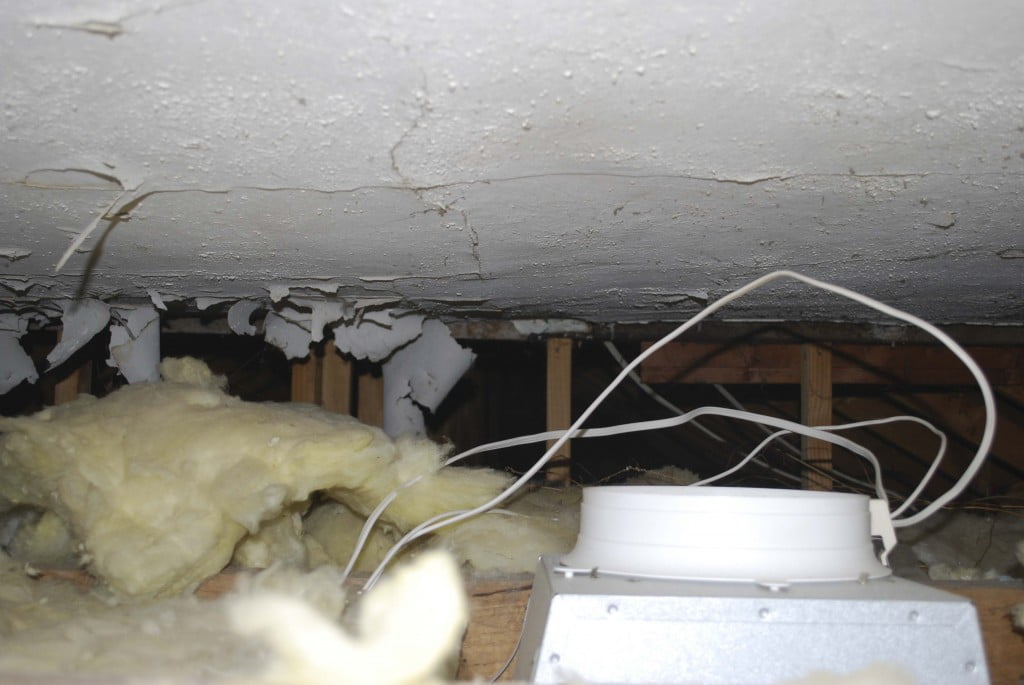
- Tim Forcey 100 Home Energy Assessments
- Residential Baseline Study for Australia 2000-2030
- Rebates for renters, landlords and homeowners around Australia
- Sustainability Victoria resources
- Your Home: Sealing your home
- A guide to draughtproofing
- Green-it-yourself draughtproofing
- Offset your greenhouse gas emissions with GreenPower. C3 provides taxdeductible GreenPower and a percentage goes to not-for-profit groups. You can also offset gas, petrol and flight emissions: www.climatechest.org.au/host/ata
Some DIY warnings
Stapling of foil insulation where electrical cables are present needs to be done with extreme caution because of the possibility of accidental penetration of cabling, with the risk of injury or death by electrocution.
There are significant dangers installing foil in a horizontal position over ceiling joists or underfloor as there is the possibility of stapling through the foil into an electrical cable, which may electrify the entire foil surface.
If electrical cables are present, installation should only be performed by a professional, insured installer. Please check all regulations before installing foil insulation yourself. Plastic staple systems, such as from www.hbs.com.au must be used.
There must be a certain amount of space around downlight fittings to prevent overheating and fires. Insulating downlight covers or mitts can be fitted over many types of light fittings, but it is important to check that the downlight cover is suitable for the type of downlight.
For information on dealing with both cabling and downlights when installing insulation, please refer to the installation guide from the Insulation Council of Australia and NZ. Also see www.icanz.org.au/consumers and www. afia.com.au/news/health-and-safety
When working in roof spaces there are some important precautions to take. Make sure that someone in the home knows you are up there and is checking on you regularly.
Never work in a roof space on hot days or when the roof space exceeds comfortable temperatures—you can rapidly become dehydrated and overheated.
If there is cabling in the roof then turn electricity off at the main switch. If this isn’t possible then ensure all cabling is in good condition (no exposed wires, no crumbling insulation) before you start work.
To prevent falling through the ceiling it is best to use a work platform that spans at least three joists. A 19 mm thick piece of structural ply at least 450 mm wide makes a good platform. Working on a platform also reduces the chance of damaging insulation and/or electrical cables.
Don’t undertake draughtproofing in any room with an unflued gas heater as, in a tightly sealed home, the gases from such appliances can present a carbon monoxide poisoning risk.
With other gas appliances, get them checked at least every two years to ensure they are working safely and efficiently.
When sealing a home it is important that adequate ventilation is provided for gas cooking. Your rangehood exhaust should be sufficient. Use the rangehood exhaust fan whenever you are cooking with gas.
See here for more information on draughtproofing.
This article was first published in Renew 134 (January-March 2016). Renew 134 delves into the world of energy auditing and how to go about reducing your home’s energy consumption.
Recent articles
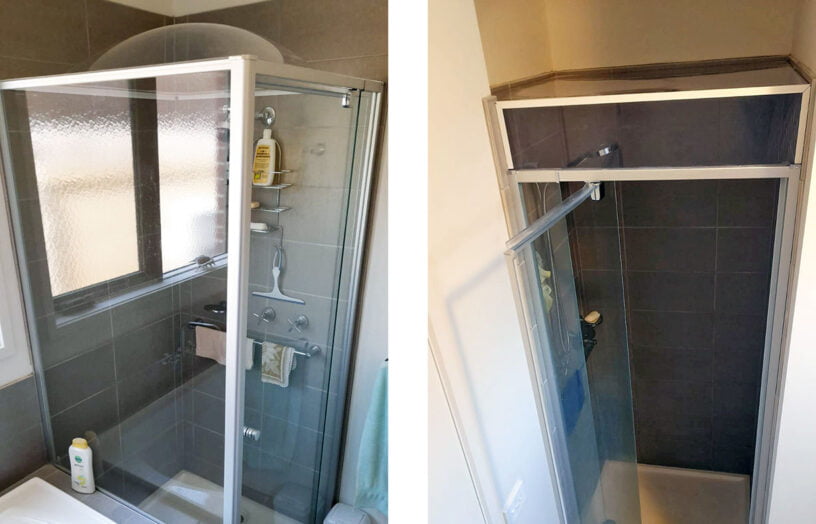 Efficient homes
Efficient homes
Ditching the shower fan
By fitting a lid on the shower, exhaust fans are not needed when showering. John Rogers describes this simple retrofit, using both a commercial product and a great looking DIY version.
Read more Efficient homes
Efficient homes
Building for a changing climate
Are we building homes for the future, or for the past? Rob McLeod investigates how climate change is impacting home energy ratings and the way we build our homes.
Read more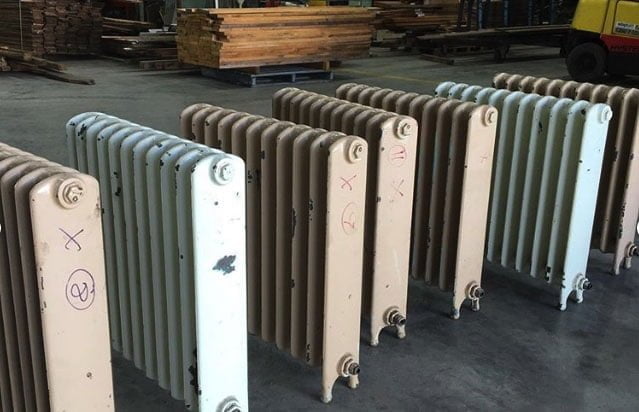 Reuse & recycling
Reuse & recycling
Recycled hydronic heat
Renew’s sustainability researcher Rachel Goldlust gives us a view of and from the Salvage Yard.
Read more
